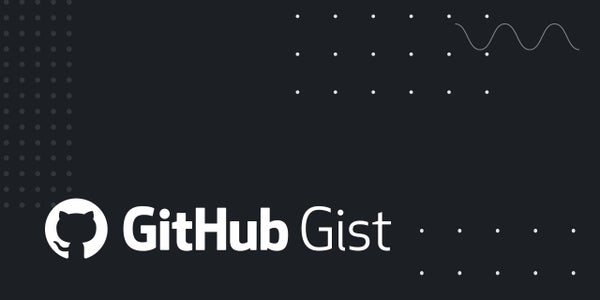 |
| submitted by /u/SpatialComputing [visit reddit] [comments] |


 |
| submitted by /u/SpatialComputing [visit reddit] [comments] |
I have tried to download tensorflow through pip install
tensorflow but only get ERROR: Could not find a version that
satisfies the required tensorflow and ERROR: No matching
distribution found for tensorflow. I have updated pip to 20.3.3 and
I have python 3.9.1. I’m running it in pycharm, cmd, and visual
studio. How can I fix this?
submitted by /u/Creeperhaten1
[visit reddit]
[comments]

I’m trying to create my own model to classify a face as either
wearing a mask or not, and by what ratio. This
is my Colab notebook, with predictions output at the end.
The question is:
How do I make the model predict with confidence, for example:
[0.966 0.034]?
Note: I didn’t use binary_crossentropy with one neuron dense
layer on purpose for this model, as I am planning on adding a 3rd
class (mask worn incorrectley) as soon as I have a better
dataset.
submitted by /u/LGariv
[visit reddit]
[comments]
Arman Toorians isn’t your average classic car restoration hobbyist. The NVIDIA engineer recently transformed a 1974 Triumph TR6 roadster at his home workshop into an EV featuring AI. Toorians built the vehicle to show a classic car can be recycled into an electric ride that taps NVIDIA Jetson AI for safety, security and vehicle management Read article >
The post Electric Avenue: NVIDIA Engineer Revs Up Classic Car to Sport AI appeared first on The Official NVIDIA Blog.
 In this interview, Miguel Molina, Director of Developer Relations at SplitmediaLabs, the makers of XSplit, discussed how they were able to easily integrate NVIDIA Broadcast into their vastly popular streaming service.
In this interview, Miguel Molina, Director of Developer Relations at SplitmediaLabs, the makers of XSplit, discussed how they were able to easily integrate NVIDIA Broadcast into their vastly popular streaming service. 
In this interview, Miguel Molina, Director of Developer Relations at SplitmediaLabs, the makers of XSplit, discussed how they were able to easily integrate NVIDIA Broadcast into their vastly popular streaming service.
For those who may not know, tell us about yourself?
My name is Miguel Molina, currently the Director of Developer Relations at SplitmediaLabs, the makers of XSplit. I’ve been with the company since before its inception, starting out as a software engineer, moving onto product management, and finally landing in business development where I work with our industry partners to find integrations and opportunities that bring value to our customers.
Tell us about Xsplit and the success of the company thus far.
XSplit is the brand that got us to where we are now and XSplit Broadcaster is the hero product behind it all. It’s a simple yet powerful live streaming and recording software for producing and delivering rich video content that powers countless live streams and recordings around the world.
What excited you most about NVIDIA Broadcast Engine?
Being able to add value to our products is a priority for us and the NVIDIA Broadcast Engine gives us just that in a straightforward package. With features that improve video, audio, and augmented reality, the SDK has the potential to massively improve the output of different types of media, vastly improving the user experience for various use cases.
Why were you interested in integrating the Audio Effects SDK?
We were looking for an alternative to CPU-based background noise removal and NVIDIA’s demo videos showing off NVIDIA’s noise removal feature got us sold on the idea. After receiving a sample, we decided to commit to integrating it into XSplit Broadcaster.
How was the experience integrating the SDK?
It was as simple as looking at the sample code, putting the relevant code segments in their proper places, and hitting compile. The initial integration itself just took a few hours and a working build was available the same day we started on it.
Any surprises or unexpected challenges?
We were initially having massive CUDA utilization in an early alpha build of the SDK but NVIDIA engineers were very responsive and quickly isolated the issue on their end and were able to provide an updated build that fixed the problem.
How have your users responded to the improved experience?
Our users love the fact that they are able to utilize NVIDIA’s noise removal natively within XSplit Broadcaster. It’s as simple as turning it on and it just works.
What new features or SDKs from NVIDIA are you looking forward to now?
We are looking to update our NVIDIA Video Codec SDK implementation so we can provide better granular preset control over quality versus performance on NVENC.
Which of the NBX SDKs are you most interested in beyond Audio?
Definitely the Video Effects SDK as their Virtual Background and Super Resolution features would be quite useful with people mostly staying at home these days.
+++
Developers can download XSplit Broadcaster here.
To learn more about NVIDIA Broadcast, or to get started, visit our page here.

 |
So, for instance, I have a pair of stereo images (as an example, I can perform instance segmentation on the images and get the I was thinking of using Siamese Networks to get a similarity Any help would be great! TIA! submitted by /u/chinmaygrg |
Flying, driving, gaming, racing… amid the first-ever virtual Consumer Electronics Show this week, NVIDIA-powered technologies spilled out in all directions. In automotive, Chinese automakers SAIC and NIO announced they’ll use NVIDIA DRIVE in future vehicles. In gaming, NVIDIA on Tuesday led off a slew of gaming announcements by revealing the affordable new RTX 3060 GPU Read article >
The post Amid CES, NVIDIA Packs Flying, Driving, Gaming Tech News into a Single Week appeared first on The Official NVIDIA Blog.
I made a chatbot using TensorFlow, from Tech With Tim’s tutorial. I
changed it for a discord bot and flask. But for my project I want
to somehow show ANY DATA, but in visual form, graphs, pie charts,
bars. I don’t know how to use TensorBoard to visualize my chatbot
data.
This is my code:
https://github.com/hootloot/Tensorflow-Question/blob/main/main.py
Thank you
submitted by /u/chopchopstiicks
[visit reddit]
[comments]
I published a tutorial where I explain how to save an
AutoEncoder with Python + Keras. In particular, in this video
you’ll learn how to save/load the Autoencoder class parameters
with pickle and the model weights with methods native to the Keras
API.
This video is part of a series called “Generating Sound with
Neural Networks”. In this series, you’ll learn how to generate
sound from audio files and spectrograms 🎧 🎧 using Variational
Autoencoders 🤖 🤖
Here’s the video:
https://www.youtube.com/watch?v=UIC0Irq-Eok&list=PL-wATfeyAMNpEyENTc-tVH5tfLGKtSWPp&index=7
submitted by /u/diabulusInMusica
[visit reddit]
[comments]
There’s a new brand of automotive intelligence equipped with the brains — and the battery — to go the distance. SAIC, the largest automaker in China, joined forces with etail giant Alibaba to unveil a new premium EV brand, dubbed IM, or “intelligence in motion.” The long-range electric vehicles will feature AI capabilities powered by Read article >
The post IM AI: China Automaker SAIC Unveils EV Brand Powered by NVIDIA DRIVE Orin appeared first on The Official NVIDIA Blog.